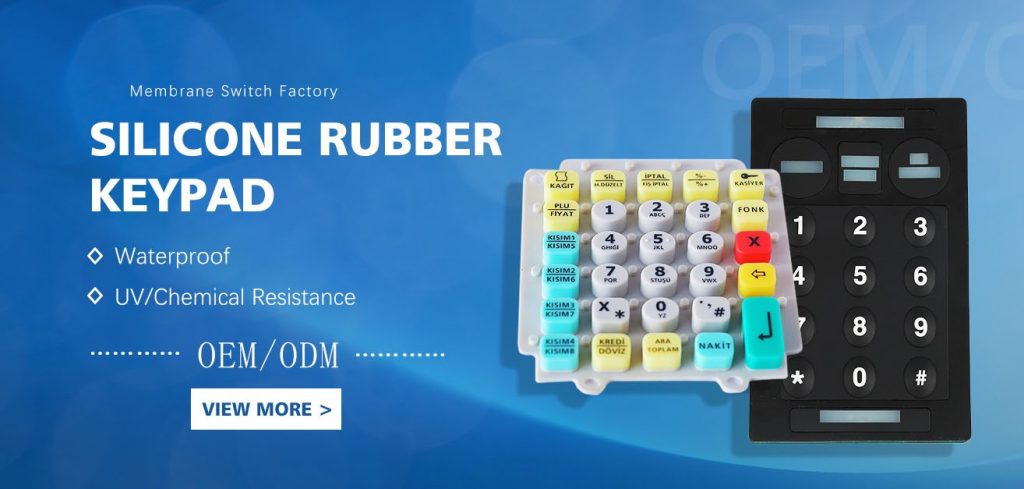Contact
Write to Us And We Would Be Happy to Advise You.
Do you have any questions, or would you like to speak directly with a representative?
By hqt

A rubber keypad is an essential component of many electronic devices and industrial equipment. These keypads provide a user-friendly interface and are known for their durability and reliability. In this comprehensive guide, we will explore the various aspects of rubber keypads, their construction, applications, and customization options. We will also discuss the benefits, manufacturing process, and design considerations to help you make an informed decision when choosing the right rubber keypad for your specific needs.
A rubber keypad, also known as a silicone rubber keypad or elastomeric keypad, is a type of user interface that consists of individual rubber keys. These keys typically have a conductive layer on their underside, which allows them to register a user’s input when pressed. Rubber keypads are commonly used in various industries, including consumer electronics, industrial equipment, medical devices, and military applications.
There are several advantages to using a rubber keypad as a user interface for your product, including:
A rubber keypad is made up of several components that work together to provide a reliable and user-friendly interface. These components include:
The primary material used in the construction of rubber keypads is silicone rubber. This material offers excellent durability, flexibility, and resistance to environmental factors. Silicone rubber also provides a comfortable and non-slip surface for users, enhancing the overall user experience.
Beneath the silicone rubber keys is a conductive layer, typically made from carbon or gold. This layer allows the rubber keypad to register a user’s input when a key is pressed. The conductive layer forms a connection with the underlying circuit board, completing the electrical circuit and triggering the appropriate response from the device.
The circuit board is the electronic component of the rubber keypad, responsible for processing the user’s input and controlling the device’s functions. Circuit boards can be designed with various levels of complexity, depending on the specific requirements of the application.
A protective coating is often applied to the surface of the rubber keypad to enhance its durability and resistance to environmental factors. This coating may be made from materials such as polyurethane or epoxy, which provide additional protection against wear, tear, and environmental damage.
Rubber keypads are widely used in a variety of industries and applications, including:
When choosing a rubber keypad for your product, there are several customization options available to help you create a unique and user-friendly interface. These options include:
Rubber keypads can be designed in various sizes and shapes to suit the specific needs of your product. You can choose from standard key shapes, such as rectangular or circular, or create a custom shape to enhance the aesthetics and functionality of your device.
Rubber keypads can be manufactured in a wide range of colors, allowing you to create an eye-catching and visually appealing interface. Additionally, graphics can be added to the keys to provide users with clear visual cues for each function.
The key travel (the distance a key moves when pressed) and actuation force (the amount of force required to press a key) can be adjusted to create a comfortable and responsive user experience. This can be particularly important for applications where users may be wearing gloves or require a more tactile interface.
For devices that need to be used in low-light conditions, backlighting can be added to the rubber keypad. This can be achieved through the use of LEDs or electroluminescent panels, providing users with a clear and visible interface in any lighting situation.
The manufacturing process for rubber keypads typically involves the following steps:
When designing a rubber keypad, there are several factors to consider to ensure that the final product is both functional and user-friendly. Some of these factors include:
Rubber keypads are a versatile and cost-effective solution for many electronic devices and industrial equipment. With their durability, customization options, and user-friendly interface, they are an excellent choice for manufacturers looking to create a reliable and visually appealing user interface. By considering the various design factors and customization options, you can create a rubber keypad that meets the specific needs of your application, ensuring a successful and long-lasting product.
Do you have any questions, or would you like to speak directly with a representative?